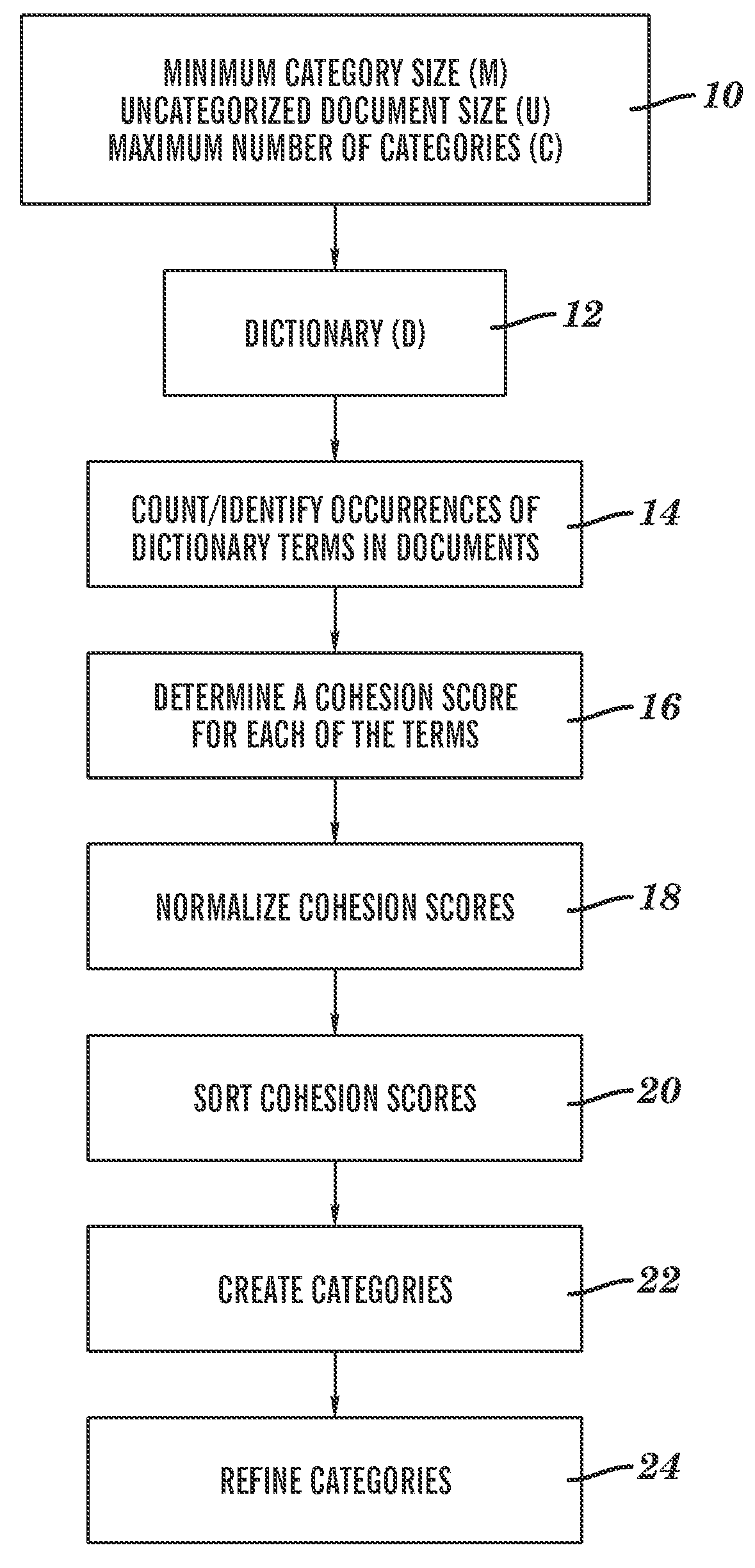Document clustering based on cohesive terms
- Summary
- Abstract
- Description
- Claims
- Application Information
AI Technical Summary
Benefits of technology
Problems solved by technology
Method used
Image
Examples
example
[0040]
public class IntuitiveClustering extends TextClustering implements ActionListener { float wcohesion[ ] = null; String tempName = null; public float granularity = 0.9F; public HashSet badTerms = new HashSet( ); TextClustering tc = null; public transient JDialog jd = null; transient JRadioButton more = new JRadioButton(Translate.simpleText(“MoreClasses”)); transient JRadioButton less = new JRadioButton(Translate.simpleText(“FewerClasses”)); transient JRadioButton same = new JRadioButton(Translate.simpleText(“Same”),true); transient JList values = null; transient JButton Done,Cancel; public boolean ok = true; public IntuitiveClustering(TextClustering t) { super( ); tc = t; if (!Util.getParameter(“granularity”).equals(“”)) granularity = Util.atof(Util.getParameter(“granularity”)); } public void update(float g, String a[ ]) { for (int i=0; i granularity = g; wcohesion = null; run( ); } public void promptForUpdate(Frame f, String title) { jd = new JDialog(f,true); JPanel ...
PUM
 Login to View More
Login to View More Abstract
Description
Claims
Application Information
 Login to View More
Login to View More - R&D
- Intellectual Property
- Life Sciences
- Materials
- Tech Scout
- Unparalleled Data Quality
- Higher Quality Content
- 60% Fewer Hallucinations
Browse by: Latest US Patents, China's latest patents, Technical Efficacy Thesaurus, Application Domain, Technology Topic, Popular Technical Reports.
© 2025 PatSnap. All rights reserved.Legal|Privacy policy|Modern Slavery Act Transparency Statement|Sitemap|About US| Contact US: help@patsnap.com



